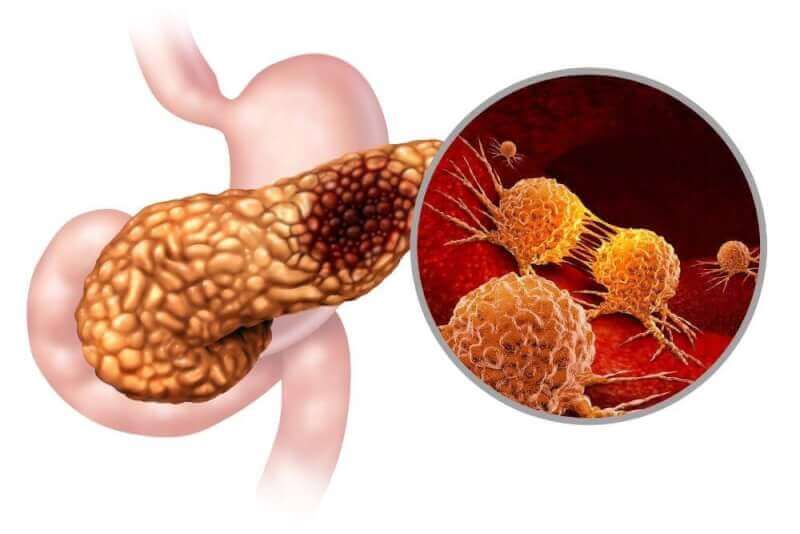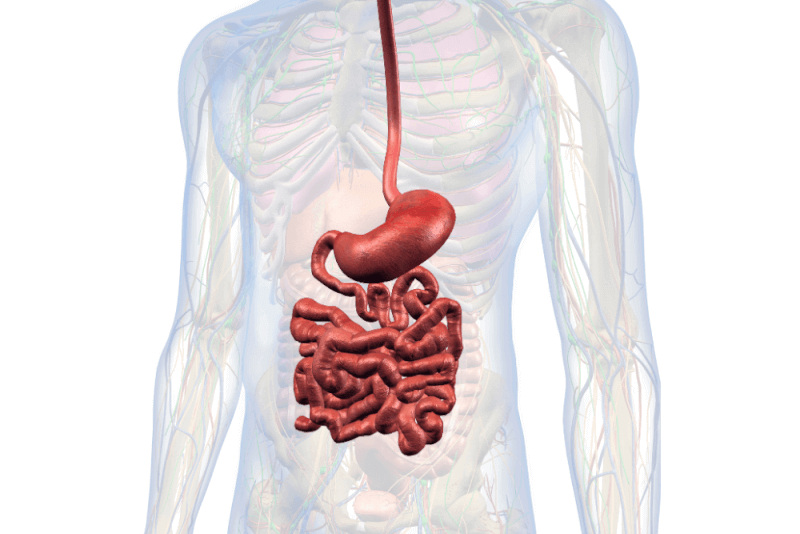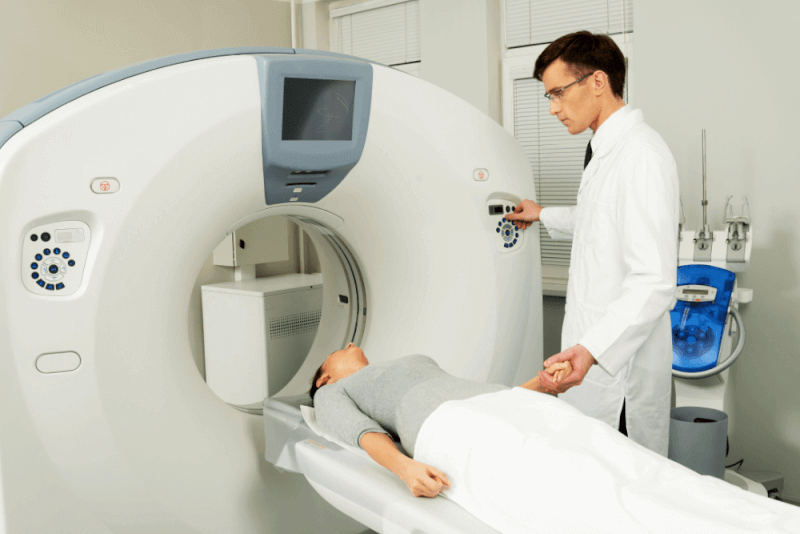What is Pancreatic Cancer?
Pancreatic cancer is caused by changes in the DNA of the pancreatic organ. The mutation in pancreatic cells leads to uncontrolled growth and reproduction of pancreatic cells and the formation of masses. Or it can cause normal cells to die and fail to function. If left untreated, it can spread to other organs. Pancreatic cancer most often arises from cells in the duct that secretes enzymes into the digestive tract. Sometimes tumors arising from the hormone-producing cells of the pancreas can also be seen. Although the causes of pancreatic cancer are not clearly known, there are some risk factors for pancreatic cancer, just like any other disease. Some of these; smoking, diabetes, family history of pancreatic cancer, obesity, chronic pancreatic inflammation are considered risk factors. If there is a family history of pancreatic cancer, you should definitely go for a check-up.
Pancreatic Cancer Diagnosis Methods
Pancreatic cancer is a difficult type of cancer to detect. In the initial stages, it may present as a common abdominal pain or stomach ache. If pancreatic cancer is suspected, various tests are ordered and checked by the doctor.
- Blood Test: Measurement of substances in the blood that are associated with the pancreas. For example, bilirubin levels, CA19-9, CEA, CA-125 and other substances are evaluated with a blood test.
- PET Scan (Positron Emission Tomography): In a PET scan, a radionuclide and labeled glucose are administered intravenously. If there are cancerous cells, the injected glucose is collected here, making it easier to detect the cancerous cell.
- Ultrasonography One of the first preferred methods is ultrasonography. According to the ultrasound results, information is obtained about whether there is a mass in the pancreas, if there is a mass, the size of this mass and in which region it is located.
- Laparoscopy: This is a surgical operation. With the help of a camera, the internal organs in the abdomen are examined to check for cancer. A laparoscope is inserted through the abdominal wall and tissue samples are taken when necessary.
- MRI (Magnetic Resonance): It is the most preferred method to make the most accurate diagnosis. In order to identify pancreatic cancer, the patient is given intravenous medication and the stage of the tumor and the size of the tumor are determined according to the MRI evaluation.
Causes of Pancreatic Cancer
The cause of pancreatic cancer is still not fully understood. However, some factors that increase the risk of developing pancreatic cancer are effective here. Smoking has been shown to be a major contributor to pancreatic cancer. Studies have shown that the lifetime risk of developing pancreatic cancer is 1 in 64. Especially obesity, excessive fat around the waist and weight gain are risk factors for pancreatic cancer. External environmental risk factors such as having diabetes, especially type 2 diabetes associated with obesity, exposure to chemical dusts, paints, excessive exposure to cleaning agents, excessive alcohol consumption, chronic pancreatitis can lead to pancreatic cancer.
There are also risk factors that cannot be changed. These are hereditary chronic pancreatitis that develops due to mutations passed down from parents or ancestors, some inherited syndromes passed down by parents, being over 45 years of age and being male, etc. These are risk factors that are not environmental and develop spontaneously. Pancreatic cancer can sometimes be difficult to diagnose in the early stages. Pancreatic cancer can be diagnosed by performing procedures such as laboratory techniques, ultrasonography, CT and MRI. After the imaging, it is determined whether the tumor is benign or malignant, and then the most appropriate treatment method is determined and the disease is solved.
Pancreatic Cancer Symptoms
Pancreatic cancer is a type of cancer that does not show many symptoms in the early stages. Symptoms that can be seen as ordinary stomach or abdominal pain can actually be a harbinger of pancreatic cancer. Some of the symptoms of pancreatic cancer include nausea, loss of appetite, jaundice, pain in the stomach, sudden weight loss and diarrhea. However, before the first diagnosis is made, it can often manifest itself with jaundice and light color in the stool. The most common symptoms of pancreatic cancer are as follows:
- Abdominal pain
- Nausea
- Vomiting
- Weight loss due to loss of appetite
- Fatigue and extreme weakness
- Abdominal pain that starts after eating or lying down
- Excessive bloating
- Pain that starts in the upper abdomen and radiates to the back
- Yellowing of the skin and under the eyes
- Darkening of urine color
- The color of the stool is light like glass paste
- Diarrhea or constipation
- New onset and worsening diabetes
- Itching
- Symptoms such as indigestion are seen in pancreatic cancer.
From a chronological point of view, there is usually first a feeling of discomfort and pain in the upper abdomen, accompanied by a loss of appetite. These symptoms are followed by indigestion and bloating. At these stages, the suspicion of pancreatic cancer often goes unnoticed by the patient. It's not so much pancreatic cancer is likened to a stomach upset. In some cases, a person may suddenly develop diabetes. This is a symptom that increases the likelihood of pancreatic cancer and a doctor should definitely be consulted. In the later stages of the disease, abdominal pain increases and is severe in the back, followed by jaundice and an increase in weight loss.
Pancreatic Cancer Treatment Methods
The treatment of pancreatic cancer varies according to the tumor condition experienced by each patient and the stage of the cancer. In terms of treatment methods; surgery, chemotherapy and radiotherapy are preferred. The pancreas has an important function for many organs and systems, and during the treatment process of pancreatic cancer, it would be better to work in coordination with specialists in many different fields such as gastroenterology, medical oncology or radiation oncology and continue the treatment in this way. The primary treatment for pancreatic cancer is surgical removal of the tumor, but surgery is not considered appropriate in very advanced pancreatic cancer diagnoses.
Chemotherapy and radiotherapy are often needed in the postoperative period. If surgical removal of the tumor is not possible, chemotherapy or radiotherapy can be used to reduce the size of the tumor and provide a chance to surgically remove the tumor. Thanks to the medical technology MR-LINAC, even tumors in organs that are mobile during treatment can be detected and irradiated and destroyed with pinpoint accuracy. While the tumor is irradiated, the surrounding healthy tissues are protected with great precision.
When pancreatic cancer spreads to distant organs such as the liver, chemotherapy is usually the treatment of choice. The pancreas is an organ located in the posterior abdominal wall and is in the path of many blood vessels and lymphatic vessels. Therefore, the likelihood of the disease recurring after treatment is over can be high. In some cases, patients whose treatment is finished may encounter pancreatic cancer again within 3 years. In addition, one of the most commonly used treatment methods for pancreatic cancer is the whipple method. The Wihipple method is also called pancreaticoduodenectomy. If the mutated structures caused by pancreatic cancer are in the head of the pancreas, the tissue in the pancreas and the tumor area can be removed from there.
In Whipple surgery, the gallbladder, part of the bile duct, the lymph ducts close to the pancreas, the head or body of the pancreas, the duodenum of the small intestine and a section of the stomach are removed. After tissue or parts of organs have been removed, it is very important to be able to connect the organs in a coordinated way. The whipple method, which is a technically difficult surgery, should be performed by doctors who are specialized in their field. If the pancreatic cancer is in advanced stages, the tumors will have spread to the blood vessels, so the whipple procedure is not suitable for these patients.
Pancreatic Cancer Surgery
The surgery for pancreatic cancer is called whipple surgery. Here, whipple surgery is often used to treat cancers originating in the head of the pancreas, the last part of the bile duct, the duodenum, and the parts where bile and pancreatic juice are poured into the duodenum. It is also applied to treat cancers in this complex area of the abdomen and benign diseases such as cystic diseases located in the head of the pancreas. Whipple surgery is an experienced operation for general surgeons and involves removing part of the stomach, part of the duodenum and part of the small intestine, the head or body of the pancreas, part of the bile duct or gallbladder and the lymph nodes around the pancreatic fluid. In order for the stomach contents, bile and pancreatic fluid, which are still coming in, to continue to be processed, the stomach, pancreas and bile ducts are connected to the small intestine and continue to be processed in this way. Whipple surgery can be performed laparoscopically, robotic or open.
There are other organs at this junction, which is made up of the bile duct, pancreas and duodenum, and the surgery takes 5-8 hours on average. The duration of surgery may vary depending on the location of the tumor and its spread. The duration of hospitalization after pancreatic cancer surgery can vary between 7-10 days. Infection, embolism and lung problems can occur in this surgery, as can occur after any surgery. During the operation, the patient is placed on a drain, as new pathways for the flow of bile and pancreatic secretions may leak. Depending on the condition of the leaks, the drains may be left in longer or new drains may be inserted. After the operation, the medications prescribed by the doctor should be used regularly. Among these drugs, drugs to regulate pancreatic enzymes are very important. Routine check-ups organized by the doctor should not be neglected. After the surgery, attention should be paid to nutrition and stress should be avoided, and smoking should be avoided. Depending on the pathology results, the doctor will inform you if chemotherapy or radiotherapy will be used after surgery.
Chemotherapy for Pancreatic Cancer
Chemotherapy is also one of the preferred treatments for this type of cancer, but care must be taken when administering this treatment. Chemotherapy treatment kills cancer cells, but it also damages healthy cells and causes various symptoms. In some cases, pancreatic cancer cells can become immune to and resistant to chemotherapy drugs, reducing the effectiveness of treatment. Chemotherapy drugs target and kill rapidly dividing cells, including cancer cells.
Chemotherapy can be used alone or in combination with radiation and surgery to treat pancreatic cancer. The type and frequency of chemotherapy drugs also depend on the stage of the cancer, the general condition of the patient and the potential side effects. Chemotherapy drugs are usually given intravenously, but in some cases they can be given orally. In some types of pancreatic cancer, combination therapy may be preferred over single-agent chemotherapy.
Some of the side effects of chemotherapy in pancreatic cancer include nausea, vomiting, hair loss, loss of appetite, fatigue, decrease in red and white blood cells in the blood, leading to anemia and infection. Peripheral neuropathy causing tingling, numbness or pain in the hands and feet or palms Hand-foot syndrome, which causes redness, swelling and pain on the soles of the hands and feet, can also be a side effect of chemotherapy. Patients can improve their quality of life and make the process more comfortable by telling healthcare professionals about the side effects they are experiencing.
Signs of Recovery in Pancreatic Cancer
After pancreatic cancer treatments, it is necessary to observe the patient's signs of recovery very carefully. Some of the signs of recovery are as follows;
- If the person has had surgery, the pain starts to decrease after the surgery as a sign of recovery.
- During the recovery process, the patient's physical activity begins to return to normal. But it is important to follow the doctor's advice.
- The person's appetite improves and starts to gain weight.
- The side effects of treatments such as chemotherapy and radiotherapy gradually decrease during the healing process.
- When the patient starts to recover, the stress level decreases and the person starts to relax.
The symptoms of recovery are different for each person and are linked to the patient's overall health and psychology. It also depends on the type of surgery and the stage of the disease. During this process, the patient's communication with the doctor is very important and it is very important for the patient to ask his/her concerns and questions to the doctor.
Pancreatic Cancer Stages
Cancerous cells in the pancreas can start in a small area and spread throughout the body in different ways. Cancerous cells can disrupt the normal tissues around them through the tissue, reach other parts of the body through the lymph channels, or metastasize to other parts of the body through the blood. Pancreatic cancer is divided into specific stages depending on the area and size of the spread.
Phase 1
Pancreatic cancer 1. At this stage, the tumor is localized only in the pancreas and does not spread to other organs. It is called stage 1A and 1B. If the size of the tumor is less than 2 cm, it is called stage 1A, and if the size of the tumor is between 2-4 cm, it is called stage 1B.
Stage 1 Symptoms
- Nausea
- Loss of appetite
- Sudden weight loss
- Jaundice
- Stomach pains
Phase 2
Pancreatic cancer 2. At this stage, the tumor expands locally and reaches near the lymph nodes. There is no spread to other organs yet, but the risk is increasing and the size of the tumor has exceeded 4 cm.
Stage 2 Symptoms
- Jaundice
- Light color in stool
- Abdominal pain that starts after eating or lying down
- Bloating
- Fatigue
Phase 3
In the third stage of pancreatic cancer, the tumor in the pancreas has spread to a larger area. It can spread to nearby vessels and nerves. At this stage, there is no metastasis yet.
Stage 3 Symptoms
- Sudden onset of diabetes
- Pain that starts in the upper abdomen and radiates to the back
- Yellowing of the skin and under the eyes
- Darkening of urine color
- Stools appearing the color of glass paste
Phase 4
It is the last stage of pancreatic cancer and can spread to distant organs such as the intestine, liver, stomach, lungs and brain.
Stage 4 Symptoms
- Frequent vomiting
- Gas pains are much more frequent than usual and bloating occurs
- The person feels constantly tired and sluggish
- Complains of itching
- Varicose veins may occur
- Irregular heartbeat occurs
- Contractions may occur in various parts of the body
- Breathing difficulties are observed.
The most challenging and devastating symptoms of pancreatic cancer appear in the last stage. This makes pancreatic cancer insidiously progressive. In the last stage of the disease, symptoms such as nausea, jaundice and loss of appetite appear. If the cancer is located in the head of the pancreas, white fluids may appear during defecation. In the last stage, there is severe pain in the back. The treatment process is applied according to the stage of the disease and the condition of the person.
Nutrition in Pancreatic Cancer
The pancreas is located at the back of the stomach and is very important for digestion and regulation of blood sugar. Weight loss is a very typical symptom of pancreatic cancer and it is important to eat the right foods to stay strong and healthy during treatment. However, it can be difficult to eat because of digestive problems caused by pancreatic cancer and the treatments. In pancreatic cancer, it is more beneficial to consume foods that reduce the enzyme secretion of the pancreas, which is beneficial to prevent the tumor from regenerating.
People in this process should consume enzyme preparations, fresh fruit, vegetables and plenty of vitamin VC foods. It is important that pancreatic cancer patients eat a diet rich in protein. Fish, lean red meat, eggs, yogurt, legumes should be consumed. Omega 3 is very helpful in this process. Only olive oil should be used as a fat. Supplements such as pine honey and black grape molasses should be consumed. Meals should be smaller, smaller and more frequent. It will be easier to eat small portions rather than three large meals. Harmful substances such as alcohol and cigarettes should never be consumed during this period.











H** J** | 09 Dec 2023